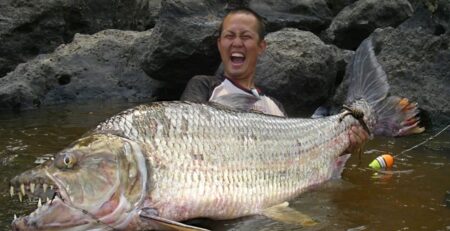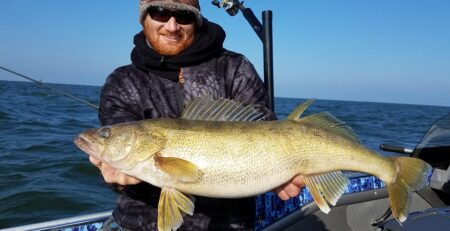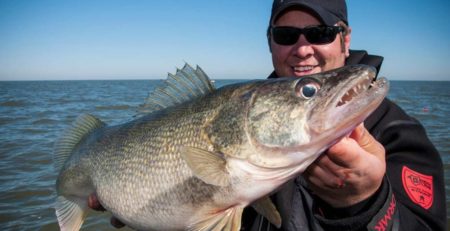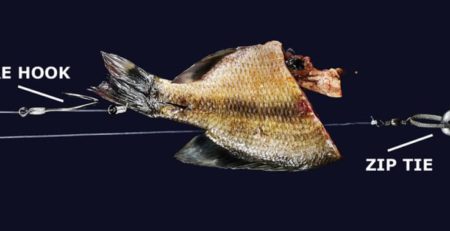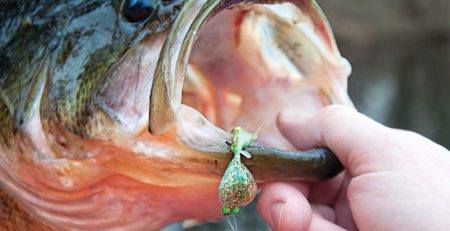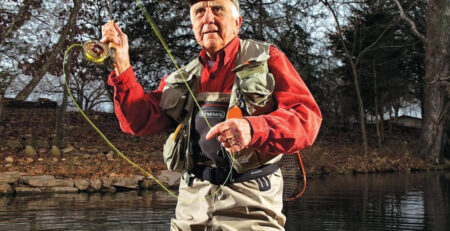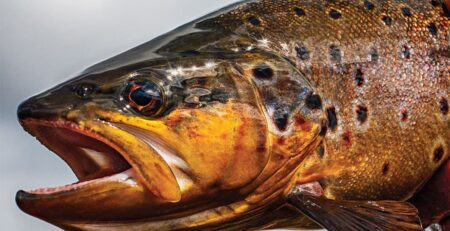How to Pitch for Bass Like Mike Iaconelli
The legendary bass pro shares his method for pitching lures to largemouth bass
Big bass like tight spots choked with weeds, downed timber, or overhanging branches—spots you often can’t reach with an overhand cast. You need to learn to present your bait with an underhand cast that keeps the bait close to the water and drops it with a plop instead of a crash. This is known as pitching, and bass pro Mike Iaconelli does it as well or better than anyone else.
Wind Up
“If you’re new to this cast, start by setting the rod’s brake and anti-reverse so that the bait falls slowly, about 2 feet per second,” says Iaconelli. This guards against backlash. “As you get better, you can back off to your regular settings.” Next, strip off enough line so that the lure hangs even with the reel, and palm the lure in your off hand. (Watch that hook.)
Now point the rod tip low, “as much as a couple of feet below your feet if you’re in a boat.” Engage the spool release but hold the line down with your thumb. Then hold the bait about waist-high, and you’re ready to cast.
Make the Pitch
The cast itself is a simple swing of the rod tip from low to high, which creates a pendulum. “As you swing, use a bit of wrist-snap to add power and speed, and let off almost all of the thumb pressure on the spool so the line plays out.” The trick here is to feather the line with your thumb just enough to keep the spool from spinning too fast and to control the length of the cast. “The lure will go where your eyes are looking and where the rod tip points,” says Iaconelli. “So just look at your target and try to make the lure go there.” Keep the rod tip high, and when the lure reaches the target, stop it by mashing the spool with your thumb.
Good Delivery
“As the lure enters the water, lower the rod tip and bow your body to the bait so it falls on a semislack line,” he says. If you have too tight a line, the bait won’t fall naturally to the fish. If it’s too loose, you may not be able to react quickly enough when the fish takes the bait. “A lot of the bites come on that initial fall. But if I don’t get bit there, I’ll hop the bait two or three times on the bottom, then shake it up toward the surface,” says Iaconelli. Once it’s there, he ticks it a few times on the top, then lets it fall again, hops it one more time on the bottom, and finally pitches to the next promising pocket or hole.
Throw a Change
The standard pitch should keep your lure close to the water the whole time that it’s in the air so you can get under boat docks or overhanging vegetation. But once you’ve got the basic technique down, introduce subtle variations to take it to the next level. “One of my favorites is the pitch-skip,” says Iaconelli. “I start the rod tip farther to the left, and I hold the bait farther off my left hip. Then I make more of a side-arm swing, with extra wrist-snap for more speed and momentum to skip a pitched lure under a really low obstacle to reach bass other fishermen miss—often the biggest bass in a given spot.”
Written by Bill Heavey for Field & Stream and legally licensed through the Matcha publisher network. Please direct all licensing questions to legal@getmatcha.com.
Featured image provided by Field & Stream


